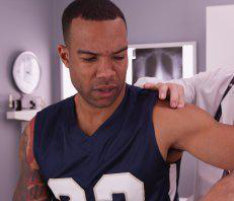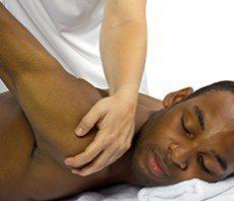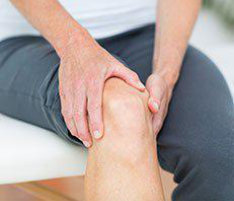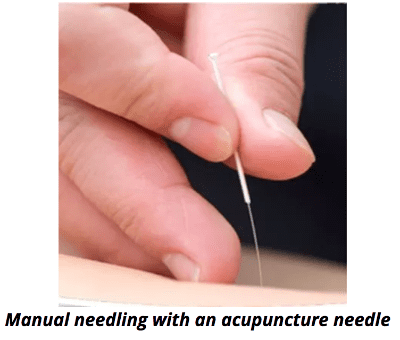
Manual Needling – Traditional State of the Art
A thin needle is used in manual needling methods such as IMS, dry needling, or trigger point needling. A needle is inserted manually in the muscle by the practitioner who then moves the needle’s handle in a piston-like motion to elicit LTRs. Small diameter needles are used because larger diameter needles cause more pain for patients during treatment. Inserting the needle require significant effort when the muscle band is really tight. Sometimes, needles bend making needling difficult, if not impossible. Eliciting LTRs in very tight muscle bands is difficult.
Automated Intramuscular Stimulator – The Key Invention
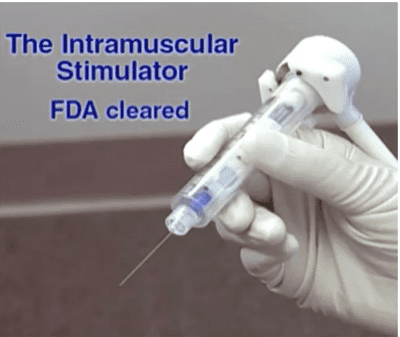
To overcome the shortcomings of manual needling, an automated needling device called Automated Intramuscular Stimulator was invented by Young Lee, Dr. Lee’s husband. This device uses a motor for needling action. A thick (about 0.4 mm diamter) Teflon-coated needle is employed. The Teflon makes the needling easier due to its slippery surface while thicker diameter (than the manual needles) enables needling of tight muscle bands easy. It turned out that thicker diameter needle can elicit LTR more readily than the needles used in manual needling. Furthermore, stronger LTRs can be generated readily. One major disadvantage of using a thick diameter needle is that the treatment pain is much greater compared with thin needles used in manual needling.
A-IMS – The Best Tool for Neutralizing Trigger Points
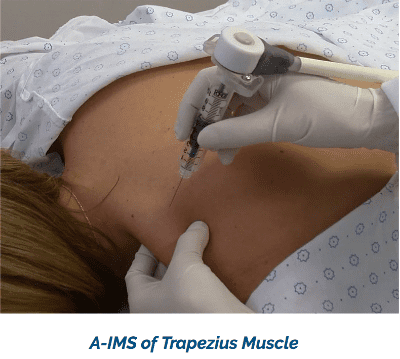
Dr. Lee uses the Automated Intrastimulator device for needling in her Automated Intramuscular Stimulation (A-IMS) procedure that she pioneered. In this procedure, premedication is used to minimize patient discomfort during treatment. The following table compares A-IMS with manual needling methods. One can see clearly the strong advantage of the A-IMS procedure over the manual needling. The combination of using large diameter Teflon-coated needle, premedication, and automation transformed feeble manual needling methods into a powerful treatment procedure. Because forceful LTRs can be obtained in large numbers in a single treatment session, fast recovery from chronic pain is realized.
Comparison: A-IMS vs Manual Needling
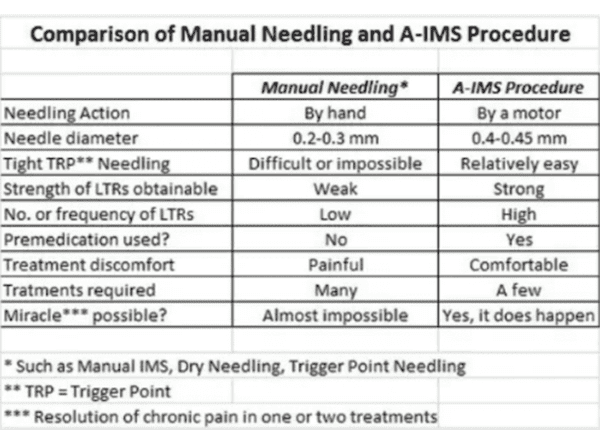
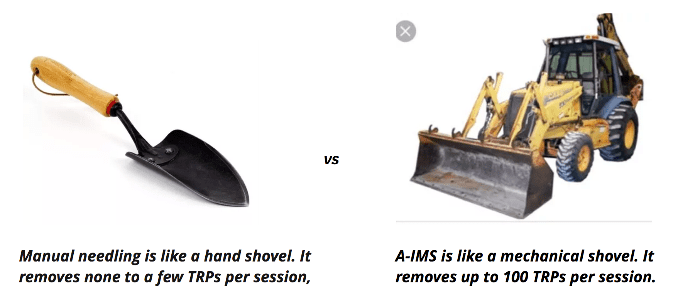
Miracles Do Happen with A-IMS Procedure
With the A-IMS procedure, “miracles” do happen. I have seen patients brought in on a stretcher, received the treatment, walked out of my office on their own. I have seen people like John Weiss, featured in the Video Presentation on HOME page, say goodbye to pain that plagued them for decades. And heard from patients like Dr. Donald Underwood in the Video Presentation who said, “I underwent two low back surgeries but I was left with incapacitating back spasm. [After] Dr. Lee gave me her [A-IMS] treatment, I received spectacular relief, my depression went away, my pain went away. Dr. Lee has certainly given me my life back.” When most active trigger points in patients’ muscles have been deactivated in a single treatment, pain quickly goes away.
It must be noted, however, that not all patients respond “miraculously” to A-IMS treatment. Depending on the quality of the muscle, recovery time varies: for patients with muscles that twitch well, the prognosis for fast recovery is excellent. However, patients with muscles that twitch poorly would have slower recovery.









